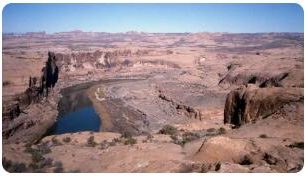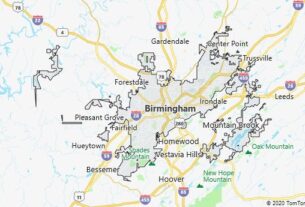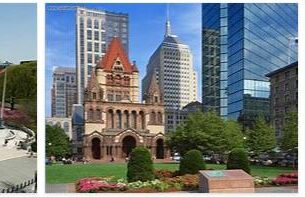The president can be a US citizen “by birth”, over 35 years old and lived in the country for at least 14 years. The constitution does not provide for a higher age limit for persons elected to the presidency. The constitution gives the president wide powers. He has the power of legislative initiative, represents the country abroad, is the supreme commander of the armed forces, appoints (with subsequent confirmation by the US Senate) members of the cabinet and senior officials of government agencies, as well as federal judges, including members of the Supreme Court and ambassadors. The President has the power to enter into international agreements in the form of an executive agreement, not subject to the approval of the Senate, but having the same legal force as an international treaty. The Constitution grants the President the power to pardon and reprieve the execution of those convicted under federal law. He has the power to convene emergency sessions of one or both houses of Congress and the power to adjourn ordinary sessions of Congress. The President submits the draft federal budget to Congress and has the right to veto bills approved by Congress, as well as the issuance of presidential orders, which are practically equivalent to laws. A presidential veto can be overridden by a second vote of 2/3 members of Congress. In the event of acute international or domestic crisis situations, the President may resort to the use of emergency powers. Under the War Powers Act of 1973, the President of the United States has the right to send troops into the territory. Check diseaseslearning for political system of United States.
The functions of the vice president in a particular administration are determined by the president, but are predominantly representative in nature. A resident of the same state as the president’s residence cannot be elected vice president.
The structure of the US executive branch includes: a Cabinet of Ministers, consisting of the heads of federal departments of the highest category – 15 ministries (State Department, Defense, Finance, Justice, Commerce, Interior, Agriculture, Labor, Health and Human Services, Education, Transportation, Energy, Housing and Urban Development, Veterans Affairs, Homeland Security), non-government departments of the Army, Navy, and Air Force; Executive Office of the President (including the White House staff, advisers and assistants to the President); Office of Management and Budget (OMB); Economic Council under the President; National Security Council (NSC); Office of Defense Technology Policy and more than 60 federal agencies and departments,
The head of executive power in the state is the governor, elected for 4 or 2 (New Hampshire, Vermont) years, who directs the work of state administrations (governments). States have autonomy in matters of state building and socio-economic regulation. Executive power in the city is exercised by an elected mayor or an appointed manager (elections and appointments are the prerogative of the City Council).
The supreme body of the federal judiciary, the US Supreme Court, consists of 9 federal judges, including the Chief Justice. Members of the Supreme Court are appointed by the president for life terms with the right to retire at will. There are also 94 federal district courts at the federal level, special courts including 12 regional courts of appeal and bankruptcy, and a foreign trade court. The US judiciary also includes the courts of individual states and districts (counties).
The basis of the political process in the United States is the existence of a two-party system. The leading parties are: the Democratic (formed organizationally in 1828, received its current name in the early 1830s) and the Republican (founded in 1854), between which the struggle for the leadership of the country is mainly waged. Relying on various social groups in society, the Republican and Democratic parties share the starting points that underlie the American political and socio-economic system. They can be distinguished by approaches to solving specific issues of domestic and foreign policy, determining the degree of state regulation and reforming the socio-economic life of the country. The symbol of the Republican Party is an elephant, the Democratic Party is a donkey.
At certain stages of the historical development of the United States, there were many other parties that never managed to get their candidate for the presidency of the country or to occupy a dominant position in the US Congress. Usually, 5 to 8 parties take part in presidential elections, including the two leading ones. The so-called third parties do not have any noticeable influence on public policy. Only once in the history of the country did the “third” party – the Progressive Party of T. Roosevelt – manage to push one of the two leading parties (Republican) to third place in terms of the number of votes received in the presidential elections (1912). “Third” parties have repeatedly succeeded in gaining significant support from the traditional electorate for one of the two main parties, thus preventing it from winning elections. The Communist Party of the USA (founded in 1919) never represented a significant political force, but regularly participated in the presidential elections of 1924–84. 900 thousand votes.
Financing of party activities is carried out mainly through voluntary donations through fundraising among supporters of the respective parties. There is no clear organizational structure and official membership in the parties; the popularity of a party and its political influence are determined only in the course of election campaigns by the number of votes cast for their candidates. The little-noticed day-to-day activities of the leading parties are led by the national committees of the respective parties, headed by national chairmen. Branches of national party committees exist in all states. Their activity (mainly in the form of fundraising and election campaigning) is manifested only on the eve and during election campaigns. The formal leader of the party is the incumbent president of the country, nominated by a particular party,
There are over 2,500 independent trade unions and associations in the USA. The leading trade union association – the American Federation of Labor – Committee of Industrial Unions (AFL-CIO) unites 63 branch trade unions (13 million members). The trade unions consist of a total of approx. 16.2 million people (13.2% of the national labor force). In the beginning. 21st century there is a further reduction in the number of trade union members: in 1983-2002 their number decreased by 6.9%. Trade union membership is dominated by men and blacks; OK. 40% of trade union members are civil servants and less than 10% work in the private sector. The most widely covered by trade unions is the transport sector (23.8%). The average weekly wage of employees who are members of a trade union is $740;
There are more than 25,000 major national associations and societies in the United States and more than 53,000 regional, state, and local public organizations. The largest of them are the American Automobile Association (45 million members), the American Association of Retirees (32 million members). In the 1960s and 70s. in the United States there were a large number of public organizations opposed to the war, in defense of civil rights and freedoms, for racial equality, as well as women’s and youth organizations. To con. 20th century many of them have ceased to exist or have significantly reduced the scope of their activities due to the decrease in the social relevance of the problems they raise. A similar situation is observed in the activities of extremist organizations of a racist or anti-communist nature (Ku Klux Klan, John Birch Society, etc.). The largest of the organizations of black Americans is the National Association for the Advancement of Colored People (500,000 members), which annually (since 1915) awards African-Americans with a medal to them. Springarn for high achievements in various fields of political and social activity, science and culture. Significantly increased the activity of public organizations acting in defense of the environment and civil rights, consumer interests. The main organizations of the US business world: the National Association of Industrialists (18 million members), the US Chamber of Commerce (215 thousand), etc. Feminist organizations deal with gender issues: the National Organization of Women (500 thousand members), the League of Women Voters of America (150 thousand.) and etc.
The Commander-in-Chief of the Armed Forces of the country is the President of the United States. They are directly managed by the Ministry of Defense. The department’s headquarters is a building in Washington, DC, known as the Pentagon (Pentagon). The secretary of defense is appointed by the president (with the consent of the senate) from among civilians. The Armed Forces include the Ground Forces (Army), Air Force, Navy and Marine Corps. The general leadership of these types of aircraft is carried out by the ministers of the army, navy and aviation, as well as the commander of the marine corps. Ministers and employees of the apparatus of ministries are civilians. The working body of the Ministry of Defense is the Committee of Chiefs of Staff (KNSh) consisting of the chairman, deputy chairman, chiefs of staff of the army, air force and navy and the commander (commandant) of the marine corps. The KNSh exercises operational control of the country’s Armed Forces.
The number of regular armed forces is 1.3 million people in active military service. 86% of US military personnel are men. The aircraft are recruited on a voluntary basis from persons who have reached the age of 18; All military personnel receive a salary. Military personnel who are demobilized with an impeccable record of service enjoy advantages in enrolling in higher education institutions, obtaining a preferential housing loan and in employment. In addition to military personnel in active service, there are 650-750 thousand people in the US Armed Forces. civilian personnel. The Armed Forces also include the National Guard (about 470 thousand people), consisting of the Ground and Air Forces, as well as organized reserves of the army (about 780 thousand people). The National Guard is designed to defend the territory of the United States in the event of the landing of enemy troops, performs certain tasks of air defense, and is also used to combat riots, the consequences of natural disasters, etc. United States Coast Guard troops are subordinate to the Department of Transportation in peacetime; in wartime, they are transferred to the department of the Ministry of the Navy.
The National Security Council (NSC) is the coordinating body under the President of the United States, directing the activities of all government agencies in the military field. The National Security Council consists of permanent members of the council: the president (chairman of the council), vice president, secretary of state, minister of defense. By decision of the president, it may also include the chief of staff of the White House, the ministers of finance, justice, homeland security, and some other responsible government officials. As permanent advisers, the chairman of the KNSh and the director of the CIA participate in the meetings of the council as the main advisers to the president on military issues and intelligence. The National Security Adviser (Assistant) to the President is the head of the working apparatus of the NSS.
US military spending is (at current prices) $347.99 billion (3.2% of GDP, 16.96% of the federal budget) (2002).
Crime and the penitentiary system. Serious crimes per 100 thousand people. – St. 500. The number of prisoners – 1.3 million people.



